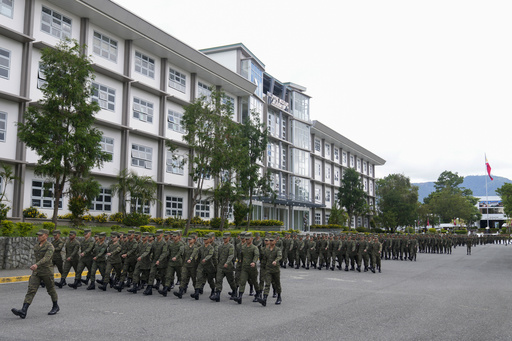In Baguio, Philippines, U.S. Admiral Samuel Paparo of the U.S. Indo-Pacific Command expressed that American forces are prepared to address escalating acts of aggression in the disputed South China Sea if instructed to do so jointly with the Philippines, their treaty ally. Paparo refrained from disclosing specific details regarding the contingency options at a news conference in response to inquiries about handling China’s gray-zone tactics in the contested waters.
The term “gray-zone tactics” encompasses various assaults such as water cannon fire and obstruction of rival ships in the disputed areas, actions falling below the threshold of an armed attack that would trigger the 1951 Mutual Defense Treaty between the Philippines and the U.S., requiring mutual assistance in case of an external armed attack.
Paparo remarked, “We certainly have prepared a range of options and USINDOPACOM stands ready, if so called, after consultations in accordance with the treaty to execute those shoulder to shoulder with our ally.” Revealing specific U.S. military strategies would potentially enable adversaries to develop countermeasures.
Following a meeting in Baguio, Adm. Paparo and Gen. Romero Brawner Jr., AFP chief, held a joint news conference to discuss security challenges and military plans, including the Balikatan exercises, the largest joint drills involving over 16,000 American and Filipino troops, partially conducted in the South China Sea.
In light of mounting tensions between Beijing and Manila, Paparo reiterated the willingness of the U.S. military, post-treaty consultations with the Philippines, to escort Philippine vessels in the South China Sea. Such actions could escalate encounters with Chinese ships. The escalating confrontations in the disputed waters have prompted Gen. Brawner to assert the Philippines’ capacity to defend itself, given the surge in hostilities with China since last year.
If all other options are exhausted, Gen. Brawner mentioned seeking assistance when Filipino forces are in dire situations due to blocked supplies by Chinese forces. During April’s joint exercises, the U.S. military transported a mid-range missile system to the Philippines, causing discontent in Beijing. China demanded the removal of the missile system, capable of posing a threat to mainland China, while U.S. and Philippine officials refrained from providing information on its relocation.
Reportedly, Chinese forces have engaged in aggressive acts against Filipino navy and coast guard vessels, leading to injuries and damaged boats. China has accused the Philippines of instigating conflicts in the disputed waters by encroaching on what it claims as its territories, demarcated by ten dashes on a map. In contrast, the Philippines has consistently cited a 2016 arbitration ruling invalidating China’s expansive claim over the South China Sea grounds.
Aaron Favila contributed to this report.


